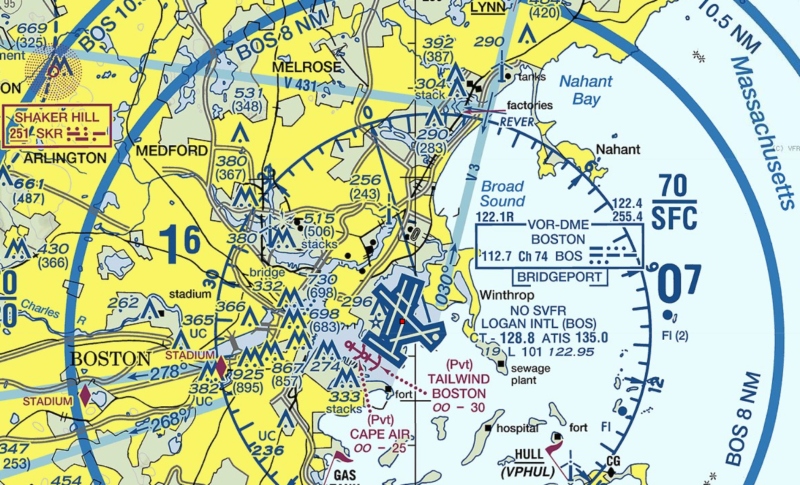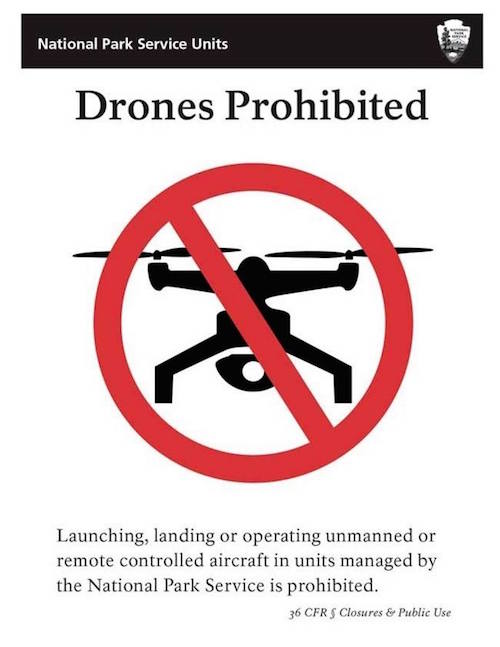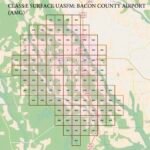Introduction to No-Drone Zones
Navigating the skies with drones has become an exciting hobby and a vital tool for various professional fields. However, it’s essential to understand the regulations surrounding drone use, especially those that designate specific areas as no-drone zones.
Understanding Drone Regulations
Drones, also known as Unmanned Aerial Vehicles (UAVs), have opened up new horizons for photography, delivery services, and agricultural inspections, among others. However, with great aerial freedom comes great responsibility. Understanding drone regulations is crucial for both novice and experienced pilots. Here’s a breakdown to help you grasp the essentials:
- Basic Regulation Authorities: In many countries, aviation authorities such as the Federal Aviation Administration (FAA) in the United States govern drone use. They establish rules that vary significantly by region and purpose of flight.
- Categories of Drone Operations: Regulations differ depending on whether you fly for fun (recreational) or for business (commercial). Ensure you know which category your flying falls into.
- Weight Restrictions: Generally, drones over a certain weight must be registered with the appropriate authorities. For instance, the FAA requires drones weighing 0.55 pounds or more to be registered.
- Altitude Limits: Most regulations dictate that drones must not exceed specific altitude limits, often around 400 feet above ground level, to reduce the risk of collision with manned aircraft.
For example, I remember my first drone flight. Excited to capture sweeping views over the lake, I quickly realized I hadn’t checked the local restrictions. Thankfully, I learned about the nearby no-drone zone, which included the surrounding state park where I wanted to fly. It was a big eye-opener, emphasizing the importance of being informed. Furthermore, certain areas have restrictions due to security concerns or public safety. Schools, hospitals, and airports often fall under this umbrella. Always cross-check the local regulation updates before taking off. A few minutes of research can save you from a hefty fine or losing your drone.
Importance of Navigating No-Drone Zones
Understanding and respecting no-drone zones can have significant implications for both safety and legality. Here’s why it’s crucial:
- Safety First: No-drone zones are typically established to ensure the safety of the public and the aircraft. For instance, flying near airports can pose severe risks for manned aircraft, and no-drone zones help mitigate that.
- Legal Consequences: Ignoring no-drone zone regulations can lead to fines, confiscation of your drone, and sometimes even legal action. Being caught in a no-drone zone can also affect your ability to get future permits or permissions.
- Drone Community Reputation: Maintaining a good standing in the drone community is essential. Regularly respecting the no-drone zones strengthens the community’s reputation, increases public support, and encourages more freedom to explore aerial innovation.
Navigating no-drone zones also ensures you can continue enjoying your hobby without interruptions. Here are practical steps to avoid flying into these regulated spaces:
- Use Drone Mapping Apps: Several applications, like UAV Forecast or B4UFly, allow you to check airspace regulations and no-drone zones before each flight.
- Consult Local Authorities: If you’re unsure about a location, reaching out to local officials can clarify permissions and restrictions.
- Stay Informed: Regulations change, sometimes even overnight. Regularly check news sources, drone community forums, and local regulations to stay updated.
An example from my own experiences comes to mind: while out on a weekend drone-flying trip, I thought it would be fun to dip over a scenic historical site. Only when I arrived did I learn that I was in a no-drone zone. Not only did I have to turn around, but I also missed out on capturing amazing photographs! Sometimes, the best view can come from preparation and adherence to regulations. In summary, no-drone zones are designated for critical reasons pertaining to safety and legal issues. Understanding the overarching regulations, recognizing the implications of navigating no-drone zones carefully, and adopting proactive measures for compliance will enhance your flying experience. As you prepare to take to the skies, keep in mind that awareness and respect for these areas contribute significantly to the future of drone technology and aviation safety. Striving for responsible piloting not only protects you but ensures that this exciting technology continues to flourish. Stay tuned as we dive deeper into how these no-drone zones are mapped and established, both nationally and internationally, so you can fly with confidence and awareness!

Mapping Legal No-Drone Zones
As a responsible drone pilot, understanding where you can and cannot fly is crucial. With no-drone zones dynamically mapped out across varying landscapes, knowing the ins and outs of these spaces will help you enjoy your hobby while adhering to legal frameworks. A comprehensive understanding of restricted airspace areas and prohibited locations for drone flight will ensure a smoother experience. Let’s dive into the mapping of these zones!
Restricted Airspace Areas
Restricted airspace areas are specific locations where drone flights are either completely prohibited or severely limited due to safety, security, or privacy concerns.
- What constitutes restricted airspace?
- Often, restricted airspaces include regions near airports, military bases, power plants, or emergency response areas.
- In the U.S., the FAA designates specific zones as “Class B,” “Class C,” and “Class D” airspace, which regulate flight operations.
When I first started flying drones, I was awestruck by their potential, envisioning distant aerial shots without limits. However, the reality of restricted airspace quickly set in—the constraints were tough lessons. For instance, I once planned to capture sunrise over a picturesque bridge, but it turned out I was flying near an airport’s Class B airspace. How to identify restricted airspaces:
- Aviation Maps: Utilize aeronautical charts available through the FAA, which clearly outline restricted areas using specific symbols.
- Drone Apps: Applications such as AirMap or DJI’s Fly Safe feature offer up-to-date information about restricted zones, aerial obstacles, and more.
- Communication with Local Authorities: Many local governments maintain databases or maps of areas where drone activity is limited or prohibited.
Key Factors to Remember:
- Be mindful of Temporary Flight Restrictions (TFRs): Weather conditions, emergencies, or special events can create temporary no-fly zones. Always check for current TFRs before you fly.
- Look out for notification boards: Many airports display notices concerning air traffic, giving pilots insight into flight patterns and potential restrictions.
Prohibited Locations for Drone Flight
While restricted airspace areas are specific to aviation regulations, prohibited locations for drone flight encompass a broader set of environments. Certain locations are off-limits for drone operations due to safety or ethical considerations.
- Common prohibited locations include:
- National Parks: Many national parks have regulations prohibiting drone flights to protect wildlife and preserve natural beauty. For instance, when visiting Yellowstone, I wanted to capture the captivating geysers, but drone use was strictly forbidden.
- Crowded Public Events: Events like concerts, sports games, or festivals generally ban drones due to the high risk of accidents and intrusive privacy concerns.
- Mass Gathering locations: Prohibited zones may include areas with large gatherings, such as protests or funerals, where flying a drone can raise ethical and respectfulness issues.
Safety and Security Considerations:
It is essential to respect that some locations have been designated for safety and security reasons. Always keep these factors in mind:
- Wildlife Conservation: Airports may prohibit drone use near wildlife habitats to prevent disturbances, ranging from migratory birds to technical wildlife services.
- Public Safety and Emergency Areas: Respecting fire, police, and medical response scenes is vital. Drones can cause chaos in emergencies, directing vital attention away from the necessary response.
In navigating the landscape of prohibited locations, practical tactics can enhance your awareness:
- Before You Fly: Always research your intended flight area. Apps like B4UFly enable you to check if your desired location falls within any prohibitive zones.
- Ask Locals: If you’re unsure, local drone pilots often have firsthand experience and information about flying conditions and prohibited areas.
- Join Online Forums: Many online communities, such as DJI forums or Reddit’s drone subreddit, allow users to share insights and experiences about areas to avoid.
In summary, understanding restricted airspace areas and prohibited locations for drone flight is vital for every drone enthusiast. Through diligent mapping and research, you can avoid the pitfalls associated with no-fly zones. The insights gleaned from utilizing available resources, learning from others’ experiences, and staying updated on regulations can elevate your flying experience. As you set your sights on the horizon, remember that knowledge and preparation are your best allies in the quest for aerial exploration. Whether it’s gazing at distant landscapes from above or honing new skills, the thrill of flying will always be enhanced when you fly responsibly. In the next section, we will explore national no-drone zones, examining federal regulations and state-specific rules that can further aid you in ensuring your flight remains safe, legal, and enjoyable!

National No-Drone Zones
Having a clear understanding of national no-drone zones will play a critical role in your piloting experience. Navigating through the myriad of federal regulations and state-specific rules ensures that you fly safely and legally. Let’s dive deeper into these aspects for a comprehensive grasp of what to expect when flying your drone.
Federal Regulations
When it comes to drone regulations in the United States, the Federal Aviation Administration (FAA) is the governing body that establishes nationwide standards. Their regulations serve as a crucial framework to ensure safety in the airspace, and understanding these regulations is fundamental for every drone operator.
Key Federal Regulations to Consider:
- Remote Pilot Certification:
- If you plan to use your drone for commercial purposes, you must obtain a Remote Pilot Certificate from the FAA. This process includes passing an exam that tests your knowledge of airspace rules, weather, and drone operations.
- No-Fly Zones:
- The FAA identifies certain areas as no-fly zones, including:
- Airports: Flying within five miles of an airport without explicit permission is prohibited.
- Restricted Military Areas: Many military installations have no-drone policies to maintain security.
- Temporary Flight Restrictions (TFRs): Certain events, such as presidential visits or emergency situations, may impose immediate no-fly restrictions.
- The FAA identifies certain areas as no-fly zones, including:
- Operational Limitations:
- The FAA regulates altitude (generally max 400 feet) and ensures that drones must remain in the pilot’s visual line of sight. This important rule helps prevent collisions, maintaining safety in shared airspace.
When I first started flying my drone, I came across a TFR due to an ongoing fire situation near a popular hiking trail. Not only was it disappointing to have to stay grounded, but it also made me more emphatic about understanding the critical nature of these regulations. Staying informed is key!
Staying Updated on Federal Regulations:
- FAA Website: The FAA regularly updates its regulations and offerings, such as the ability to apply for waivers to fly in restricted areas under certain conditions.
- Public Notices: Keep an eye out for announcements on TFRs that can pop up with little warning. Online platforms and apps are great for getting real-time notifications.
State-Specific No-Drone Zones
While the federal regulations lay down the groundwork, many states have implemented their own rules that cater to local needs and considerations around drone usage. It’s essential to understand these state-specific no-drone zones to avoid potential legal issues.
Common State Regulations:
- State Parks and Natural Reserves:
- Many states have designated no-drone zones in state parks and natural reserves to protect wildlife and preserve the natural landscape. You may be surprised to find that even popular tourist attractions (like the Grand Canyon) have strict rules about drone use.
- Privacy Laws:
- Several states have enacted laws prohibiting flying drones over private property without consent. For example, if you’re flying nearby a home and capturing footage, you might breach state privacy laws. Always err on the side of respect and caution!
- Local Government Restrictions:
- Some cities have established their own regulations that could include prohibitions against flying over public gatherings, schools, or community events. Local ordinances should always be checked, as many are developed to respond to specific community concerns.
How to Navigate State-Specific Regulations:
- Research State Laws: Websites like the National Conference of State Legislatures often have updated information regarding state drone laws, which can help you stay compliant.
- Community Engagement: Connecting with local drone enthusiasts can provide you with additional insights and current regulations.
- Stay Flexible & Informed: Laws vary widely; what’s allowed in one state could be entirely illegal in the next. Always do your homework before heading out.
I once planned a weekend trip to the beach with my drone, excited to capture stunning moments over the waves. However, I stumbled upon state regulations that prohibited drone use due to wildlife nesting areas during breeding season. A good reminder of the ever-evolving landscape of regulations!
In conclusion, navigating national no-drone zones involves understanding and adapting to federal and state laws. By staying informed and proactive, you can enjoy your drone flying experience while also respecting the necessary regulations, ensuring safety for all. Your ability to adapt to these legal frameworks can lead to a more fulfilling experience in the skies. Learning from others’ experiences and sharing your own will help foster a stronger community around responsible drone flying. Next up, we will explore international no-drone zones, comparing global no-fly zones and discussing travel restrictions for drone operators. This information will help prepare you for your next journey abroad, so you can continue enjoying your aerial adventures no matter where you are!

International No-Drone Zones
As you expand your drone piloting horizons beyond national borders, understanding international no-drone zones becomes crucial. Every country has its own set of regulations, and being informed about global no-fly zones and travel restrictions will ensure that your adventures continue without a hitch. Let’s explore these crucial topics!
Global No-Fly Zones
No-fly zones aren’t exclusive to the United States; many countries have established their own regulations to protect safety, security, and privacy. Knowing where you cannot fly is key to navigating foreign skies without falling into legal traps.
Common Global No-Fly Zones:
- Military Zones:
- Similar to the U.S., many countries enforce strict no-fly zones around military bases. Countries like the UK, Russia, and China have extensive regulations regarding aerial activity in these areas.
- Capitals and Government Buildings:
- Major cities often restrict drone flights around government buildings and the capitals themselves. For instance, flying a drone over the White House in Washington D.C. is strictly forbidden, just as it is near many other embassies or government offices across the globe.
- Airports:
- Airports are universally regarded as no-fly zones. It’s advisable to keep a distance, typically five miles around—an important factor in both local and international drone regulations.
- Cultural and Historical Sites:
- Countries like Italy and Greece have prohibited drone flights over world-renowned landmarks. When I visited the Colosseum in Rome, I was impressed by the beauty, but also reminded that drones were a definite no-go to preserve the ancient site’s charm.
- Natural Reserves and National Parks:
- In many countries, flying in national parks is prohibited to protect wildlife and the environment. For example, New Zealand has stringent restrictions on drone flights in its beautiful national parks to keep the serene environment intact.
Understanding Local Regulations:
- Research Before You Go:
- It’s essential to research the drone laws of your destination. Websites like the International Civil Aviation Organization (ICAO) and local aviation authorities can provide specific regulations.
- Access Apps:
- Use apps like DroneBuddy or Skyward to check for no-fly zones based on your location. These applications can provide real-time updates on no-drone areas and ensure you remain compliant while exploring new places.
- Consult Local Drone Communities:
- Engaging with local drone enthusiasts through forums or social media can be invaluable. They can share insights and first-hand experiences regarding regulations you may not find in official documentation.
Travel Restrictions for Drone Operators
Traveling with your drone introduces another layer of complexity. Many countries impose restrictions on drone ownership and operation that you must be aware of before your trip.
Common Travel Restrictions:
- Registration and Permits:
- Some countries require you to register your drone upon arrival. For instance, in countries like Australia and Brazil, you may need specific permits beyond general compliance.
- Insurance Requirements:
- Many countries foster regulations that require liability insurance for drone operation, especially in populous areas. Slovenia and Italy, for example, have explicit stipulations regarding insurance coverage.
- Customs Regulations:
- When crossing borders, customs may request to see your drone, and depending on the device’s size or weight, there may be additional paperwork required.
- Limited Flight Areas:
- Some regions, especially popular tourist destinations, might have flight restrictions due to crowding or safety concerns. Always check local guidelines via official tourism websites to avoid unwarranted confrontations with authorities.
- Propulsion Restrictions:
- In countries like India, the use of certain types of drones may be entirely banned or restricted to only specific groups (such as governmental agencies).
Best Practices for Traveling with Your Drone:
- Check Destination Regulations: Before you travel, research the drone laws of your intended destination, focusing on any unique local regulations.
- Prepare Documentation: Carry all necessary documentation, including proof of registration, insurance, and any permits you might need for flying in specific areas.
- Stay Connected: Utilize online forums or social media platforms to connect with local pilots. Websites like AirMap often have community features to promote responsible flying.
- Plan Your Flights: Operational planning is crucial. Map out potential flying locations and check no-fly zones in advance, so you can avoid any uncomfortable encounters.
- Respect Local Culture: Always be aware of cultural sensitivities regarding photography and drone use. Being respectful and adhering to local etiquette can often be as important as following formal regulations.
Reflecting on my travels in a few foreign lands, I fondly recall a trip to Japan. Excited to fly my drone at a popular cherry blossom viewing point, I quickly learned about existing restrictions that required me to stay grounded. It served as a valuable lesson, emphasizing the importance of situational awareness while traveling. In conclusion, understanding international no-drone zones and associated travel restrictions is vital for anyone wishing to fly their drone globally. By being proactive—researching, preparing, and respecting local regulations—you can enjoy your international drone adventures while ensuring compliance and maintaining the joy of exploration. As the drone industry evolves, the shared responsibility of drone operators fosters a positive view of this innovative technology. With this knowledge under your belt, you’re ready to take on exciting opportunities in our intricately connected world, both locally and internationally!

Navigating No-Drone Zones Safely
Navigating through the complexities of no-drone zones doesn’t have to feel daunting. By adhering to no-drone regulations and committing to responsible piloting practices, you can enjoy your passion for flying while keeping safety and legality at the forefront. Let’s explore how to ensure your flights are compliant and responsible, so you can continue soaring to new heights!
Compliance with No-Drone Regulations
Complying with no-drone regulations is not only essential for your safety but also for the safety of others. It fosters a positive relationship between drone operators and various stakeholders, including local communities and authorities. Here are some key steps to ensure compliance with the regulations:
Understand the Rules:
- Research Local Regulations:
- Each area may have different laws, from national regulations down to local ordinances. Familiarize yourself with the rules where you want to fly.
- Stay Updated:
- Regulations can change frequently. Use apps and relevant websites to ensure you have the latest information. Resources like the FAA for U.S. users or regional aviation authorities are great places to start.
Planning Your Flight:
- Pre-Flight Checklist:
- Before taking off, create a checklist that includes:
- Fuel/battery checks
- Weather updates
- Verifying no-drone zones
- Aerial maps indicating any temporary restrictions
- Before taking off, create a checklist that includes:
- Flight Authorization:
- If you’re planning to fly in an area close to restricted airspace or no-drone zones, inquire about obtaining special permissions. Some authorities may grant access under certain conditions.
- Emergency Plan:
- Always have a plan for emergencies. Know your Return to Home settings and be ready to adapt if conditions change unexpectedly.
I’ll never forget a time when I was on the verge of flying over a beautiful coastal area and suddenly spotted a “No-Fly” sign. A quick check with my flight app confirmed it was a drone-free zone due to ongoing wildlife operations. I made a mental note for next time and rerouted my plan. It underscored the importance of checking regulations—lives may depend on it!
Communication Is Key:
- Speak with Locals: When flying in new locations, having open conversations with local authorities or residents can provide insights about restrictions you may not have known.
- Engage with the Community: Join forums and drone clubs where pilots share experiences about navigating regulations locally. Sharing knowledge can be invaluable!
In staying compliant with no-drone regulations, you not only protect yourself legally but can also contribute to a positive image of the drone flying community.
Tips for Responsible Drone Piloting
Alongside compliance, practicing responsible piloting fosters a safe and enjoyable flying environment for everyone. Here are several key practices to adopt:
Respect Privacy:
- Avoid Flying Over Private Property: Always be considerate and avoid aerial footage of private residences without consent. Privacy laws can be strict, and respecting personal space is compelled good sense!
- Public Spaces: While flying in public areas, be aware of individuals around you. They may not appreciate having a drone above them, so it’s best to maintain appropriate distances.
Be Aware of Your Surroundings:
- Watch for Other Users:
- If you’re flying in busy areas like beaches or parks, keep an eye out for people and other aerial vehicles.
- Wildlife Consideration:
- Avoid flying near wildlife or nesting areas, especially during breeding seasons. Many regions have specific laws enforcing these restrictions.
- Weather Awareness:
- Always check the weather before heading out! Wind, rain, and thunder can quickly turn a perfect flying day into a hazardous situation.
Improve Flight Skills:
- Practice in Open Areas:
- Hone your piloting skills in wide-open spaces where there are fewer people and obstacles. This practice helps in building confidence and control.
- Stay Current with Gadgets:
- Update your drone’s software regularly. Drone manufacturers often release updates to improve functionality and enhance safety features.
- Respect No-Drones Zones:
- Familiarize yourself with no-drone zones in your area. Creating a mental map will help you avoid accidentally infringing on restricted areas, keeping your flying safe.
When I first began flying, I quickly realized that drone mastery didn’t come overnight. Patience and consistent practice were essential. Joining a local flying club not only improved my skills but also introduced me to seasoned enthusiasts who shared valuable insights on navigating no-drone zones, leading to immersive flying experiences.
Maintain Your Drone:
- Regular Maintenance: Inspect your drone regularly to ensure all parts, from propellers to batteries, are in optimal condition. A well-maintained drone contributes to safer flights.
- Calibration Checks: Always calibrate your drone before flights, especially if you’ve transported it over long distances, as environmental changes can affect performance.
In summary, navigating no-drone zones safely requires a commitment to compliance with regulations and a strong sense of responsibility as a pilot. By researching the regulations, planning your flights diligently, and maintaining awareness of your surroundings, you will not only enhance your flying experiences but also contribute positively to the drone community. As you prepare for your next flight, grounding yourself in knowledge, respect, and safety will allow you to enjoy the wonders of aerial exploration to their fullest! With the right preparations and an attitude of responsibility, the skies will be your playground, full of incredible memories waiting to be captured.



